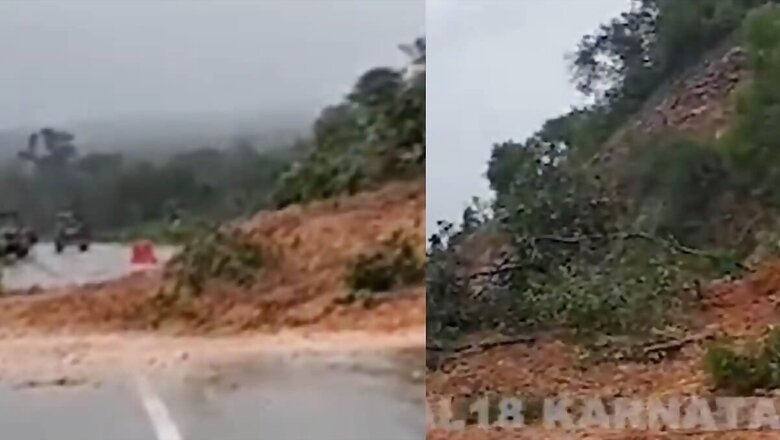
views
Uttara Kannada district in Karnataka is in turmoil after a massive landslide reportedly claimed the lives of 10 people on National Highway 66 near Shirur village in Ankola taluk on July 18. Revenue Minister Krishna Byre Gowda said that the debris swept away to tankers–one empty and the other full–into the Gangavalli river running along the highway.
The victim’s families will be given a compensation of Rs 5 lakh once the bodies are recovered. In recent years, landslides have become a common occurrence in coastal and hilly areas. Dr GS Srinivas Reddy calls it a result of human intervention.
Dr GS Srinivas Reddy said that due to soil erosion, landslides have increased in areas like Kodagu, Udupi, Dakshina Kannada, Uttara Kannada, and Chikkamagaluru. GS Srinivas Reddy claims that only 30 per cent of landslides occur naturally while 70 per cent of the remaining landslides are caused by human intervention. “Some mistakes made in the development of ideas lead to soil erosion during the rainy season,” said Srinivas Reddy.
The average rainfall of the whole Karnataka is 1550 mm but the Western Ghats receives 2500-4000 mm of rain. There are also sensitive areas with rainfall of 6000-8000 mm. Thus, landslides can occur in areas that receive such heavy rains. Another reason is that when the river’s flow increases, erosion may occur which can lead to landslides. Thus only 20-30 per cent of landslides are due to natural causes, added GS Srinivas Reddy.
GS Srinivas Reddy listed out some of the human interventions which are giving birth to landslides. It includes slope cuts and improper drainage systems. If the slope area is moved for the construction of houses and other buildings, the slope will collapse without bearing the weight of the upper soil, leading to landslides.
Whereas if a proper drainage system is not available while constructing a road or building next to a hill, the water gets into the soil and infiltrates into the ground, acting like grease and causing land subsidence.
















Comments
0 comment